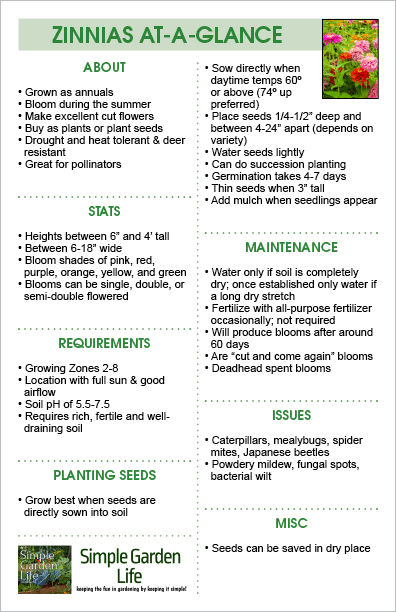Zinnias are one of the easiest annual flowers to grow on your property! Not only do they come in a variety of colors and styles, but their bright blooms will keep coming again and again when you know how to grow zinnias properly. In addition, they make excellent cut flowers, too.
These beautiful flowers can be grown in flower beds, gardens, containers, or along walkways and driveways. As long as they have good airflow and plenty of sun, you will be rewarded with colorful blooms all season long.
Zinnias can be grown in Zones 2-8. (You can find your own Growing Zone Here.) They are drought and heat tolerant as well as deer resistant, too. In addition, they are non-toxic to humans, pets, and livestock.
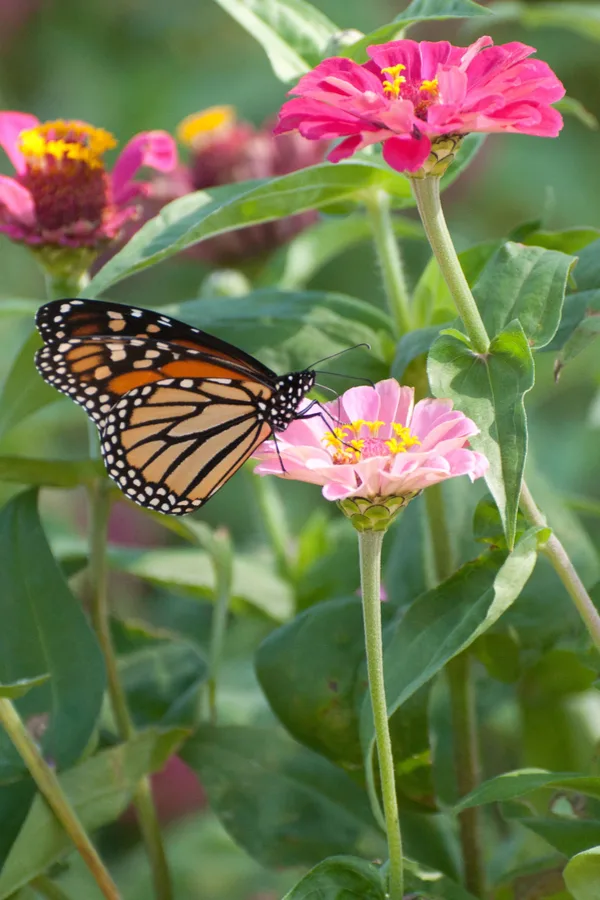
Additional Benefits of Zinnias
Another great benefit about having zinnias around your property is that they are excellent for attracting pollinators and beneficial insects.
Bees and butterflies love to dine on their pollen! In addition, wasps frequent their blooms as well.
Although most humans likely wouldn’t consider wasps as beneficial, they do help your garden since they are a natural defense against hornworms, aphids, and even stink bugs (in addition to being great pollinators)! So, while you might not want to stand too close to a wasp, they are a great addition to your garden.
Ladybugs are also attracted to the bright blooms of zinnias as well. These petite red beetles are actually prey insects that like to eat mites and aphids – a dreaded enemy for gardeners!
Combine all of these benefits with the fact that zinnias are so easy to grow, and you will realize why this is one flower most gardeners make sure to include on their property.
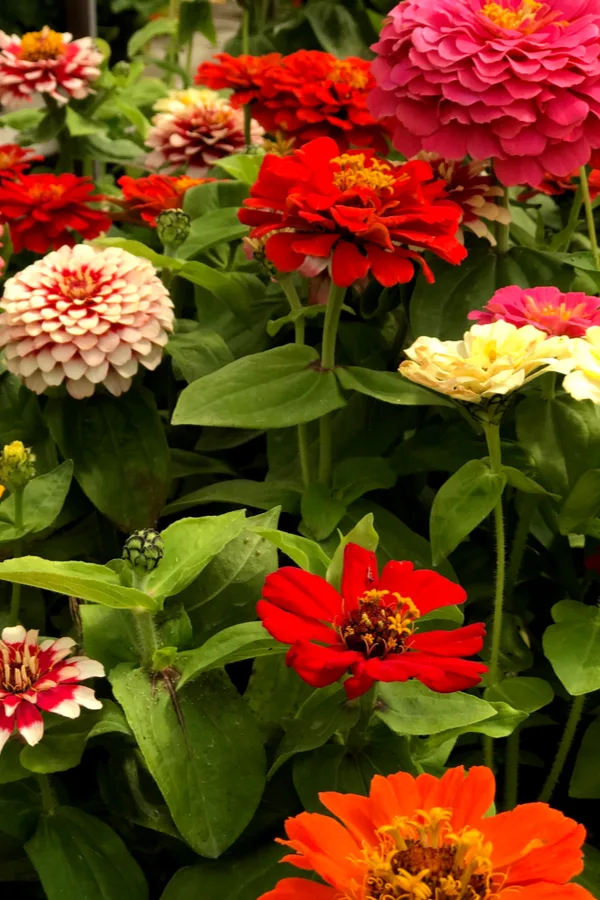
Varieties of Zinnias – How To Grow Zinnias
Zinnias come in shades of pink, red, white, purple, orange, yellow, and green. They range in height from dwarf sizes that grow as short as 6 inches all the way up to giant varieties that can be up to 4 feet tall! The smaller varieties are great for growing in containers.
In addition, their blooms can be as big as 5 inches across for some varieties.
Besides size differences, their blooms also range in petal styles as well. They can be either Single-Flowered heads, Double-Flowered heads, or Semidouble-Flowered heads.
Single-Flowered heads have a single row of petals with a visible center. Double-Flowered heads have multiple rows of petals and no visible center. Semidouble-Flowered heads are a combination of both where they have a few rows of petals but the center is still visible.
In addition to the three main petal styles, the blooms also come in multiple shapes. Blooms can be considered “domes,” “buttons,” “stars,” “cactus,” and many other shapes as well.
So there is definitely a color, height, and shape of zinnia to fit every growing circumstance and location.
How To Plant, Grow, And Maintain Zinnias
Soil Requirements for Zinnias
Zinnias require soil that is rich, fertile, and drains well. Adding in compost when planting the seeds is a great way to add additional nutrients and organic matter to the soil as well as helping aid in drainage. Zinnias prefer a soil pH of around 5.5 to 7.5.
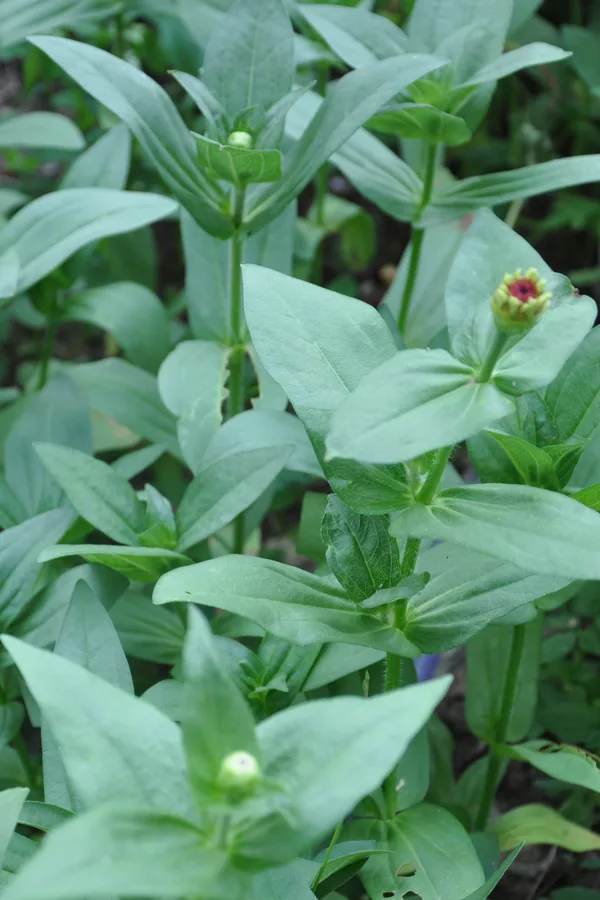
Planting Zinnias
Zinnias need warm weather to germinate, so make sure your location is well past your last Spring frost date before you plant. You can find your Last Spring Frost Date Here.
Zinnias grow best when the seeds are sown directly into the ground, but they can be planted in containers and pots. You can start the seeds indoors and then transplant once temperatures have warmed up, but you’ll have better luck with direct sowing since their roots don’t like being disturbed.
For best results, sow seeds directly into the soil when the outside daytime temperatures are 60º Fahrenheit (16º Celsius) or above. Waiting until the daytime temperatures are 74-84º Fahrenheit (23-28º Celsius) is even better though.
Plant in a location that receives full sun (a minimum of 6 hours each day). The area should also have good airflow, and the soil should be able to drain well.
Place seeds only ¼-½ inches deep and anywhere from 4-24 inches apart. The exact distance will vary based on variety, so make sure to check your seed packet for specific requirements. Typical spacing is around 6 inches apart. Lightly cover with fine soil.
If you are planting in rows or as hedges, allow at least 18 inches between rows. If you want to fill up an entire bed or area with zinnias like in the image below, allow 6 inches in all directions around each plant to allow for adequate airflow.
You may wish to plant zinnias every couple of weeks or so to ensure you can have continuous blooms all season long. (Find out more about Succession Planting Here.)
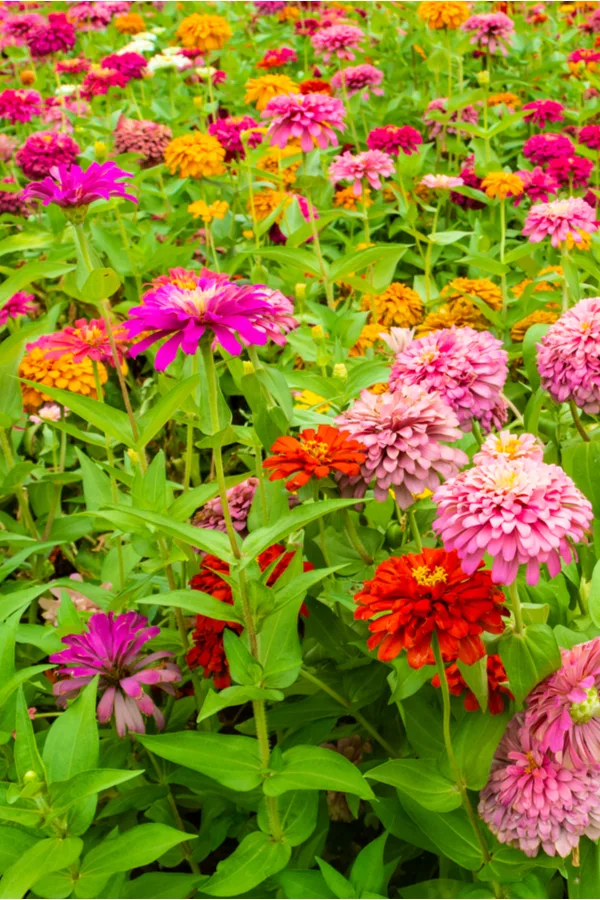
Long-Term Care – How To Grow and Maintain Zinnias
Germination for zinnias is really quick and should only take around 4 to 7 days. Thin when plants are around 3 inches tall to allow for maximum airflow and circulation. The plants will grow to be around 6 to 18 inches wide each (size depends on variety). The Zinnias should start to produce blooms after around 60 days.
Once young seedlings appear in the soil, you should mulch to help control weeds around the flowers and to help maintain soil temperatures. A nice layer of 2-4 inches of mulch will help to reduce competition for weeds. You can use anything from grass clippings, straw, wood chips, etc.
Watering
Since Zinnias are drought and heat tolerant, watering them too much is more of an issue than having them dry out. Only water young seedlings when the soil becomes completely dry to the touch. Once the plants are established, they shouldn’t need watering unless you’ve had a really dry stretch.
If you are growing zinnias in containers or raised beds, they will likely require more frequent watering. Just make sure to keep the roots from sitting in overly saturated soil for too long.
Fertilizing
Zinnias can be lightly fertilized with a high-quality, all-purpose fertilizer occasionally to help boost growth and blooms, but it isn’t required.
Pests & Issues
These colorful plants are susceptible to a few different pests and diseases. Caterpillars, mealybugs, and spider mites can all cause leaf damage to zinnias. Some damage is ok and won’t really affect the plants blooming thankfully. Watch out for Japanese Beetles though because they can quickly cause extensive damage!
Diseases such as powdery mildew, fungal spots, and bacterial wilt can all be issues as well. Making sure to keep plants spaced at least 6 inches apart when planting assures that they will get good airflow and circulation and reduce the chance of the flowers getting powdery mildew. In addition, water zinnias at the base of the plant and not on the leaves themselves whenever possible.
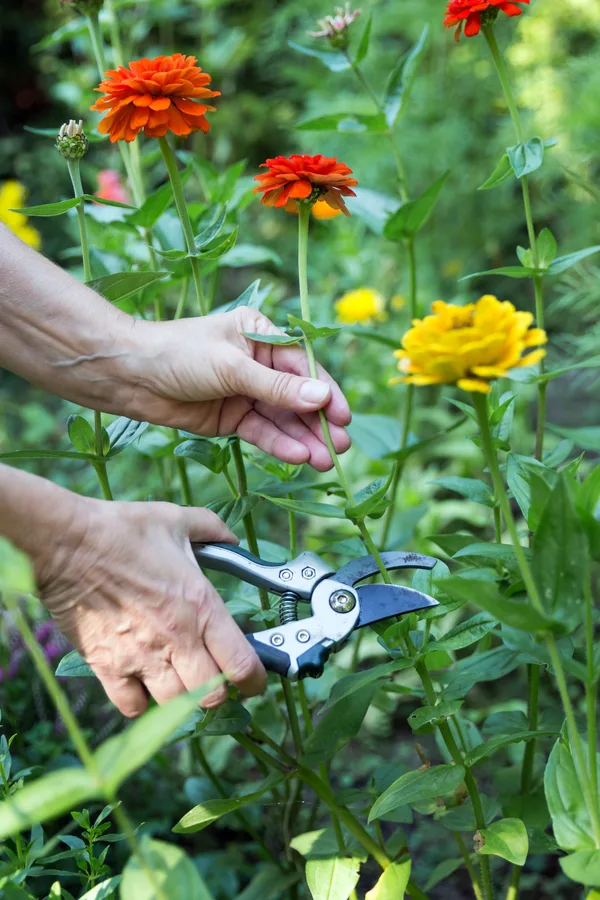
Cut And Come Again Blooms
Zinnias are well known as “cut and come again” plants, which means if you cut the blooms, they will keep on producing more. In order to keep the flowers producing additional blooms though, you should deadhead any spent blooms by snipping them off. You can also cut healthy blooms for use in colorful bouquets.
Save Their Seeds!
Zinnia seeds keep really well. Once the blooms have completely dried out, remove seeds by lightly crushing the seed head. Store the seeds in a cool, dry place (a brown paper lunch bag works perfectly).
To Conclude…
If you are looking for an easy-to-grow annual that will add tons of color to your property, then you definitely want to give zinnias a try. Being able to not only enjoy the beautiful blooms in your garden and raised beds but also appreciate the cut blooms makes these flowers well worth the try.
Feel free to download, print out, or save our Zinnias At-A-Glance sheet. It is sized for half letter printing but can be scaled if needed.
